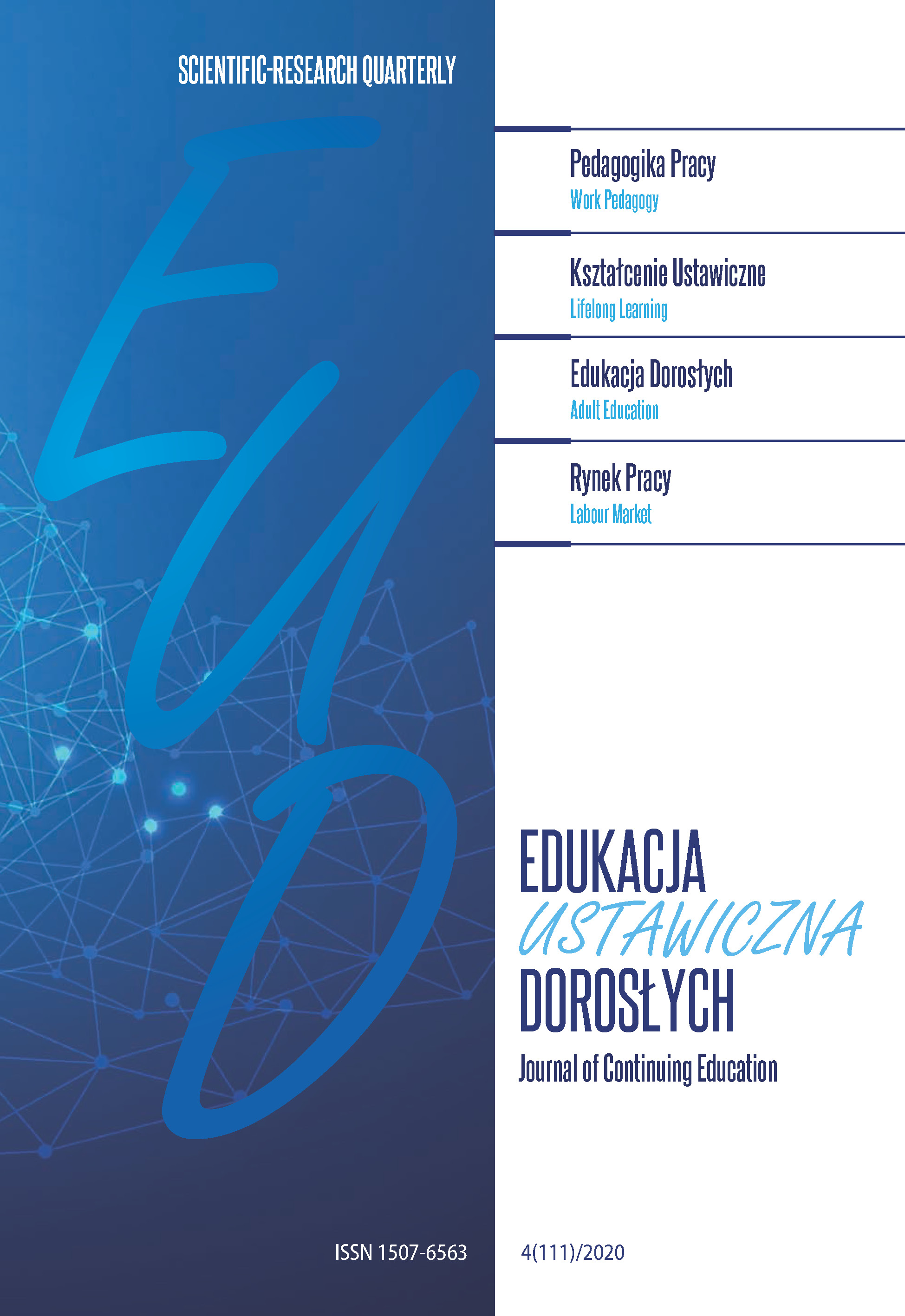Social utility of vocational education and training – selected aspects
Social utility of vocational education and training – selected aspects
Author(s): Małgorzata Szpilska, Giulia MeschinoSubject(s): Social Sciences, Education
Published by: Sieć Badawcza Łukasiewicz – Instytut Technologii Eksploatacji
Keywords: vocational education and training; social utility model; quality of education; quality management; social utility;
Summary/Abstract: The concept of “quality” is not static, is not absolute. It evolves along adaptingto changing market and customers’ needs. The training providers’ accreditation systems are themost common approaches aimed to guarantee a pre-emptive check of minimum standards ofquality in the delivery of training services. In many Member States and more and more frequently, accreditation is used as a governance tool to ensure the quality of training institutions andtraining programmes. Nevertheless, the impression is that often the adoption of such standardsfall in a routine of bureaucracy and administrative procedures aimed to overtake the constrainsof the certification/accreditation periodical checks. When this happens, “quality” is perceived byVET teachers and operators just as an overload of paperwork overlaid to current activities.In order to prove its real effectiveness, the quality of the VET provision should be analysedtowards its social usefulness. The Social Utility of vocational education and training (VET) is thesubject of qualitative and quantitative evaluations in many European countries. However, it isdifficult to clearly estimate what lies behind this concepthe concept of “quality” is not static, is not absolute. It evolves along adapting to changing market and customers’ needs. The training providers’ accreditation systems are the most common approaches aimed to guarantee a preemptive check of minimum standards of quality in the delivery of training services. In many Member States and more and more frequently, accreditation is used as a governance tool to ensure the quality of training institutions and training programmes. Nevertheless, the impression is that often the adoption of such standards fall in a routine of bureaucracy and administrative procedures aimed to overtake the constrains of the certification/accreditation periodical checks. When this happens, “quality” is perceived by VET teachers and operators just as an overload of paperwork overlaid to current activities. In order to prove its real effectiveness, the quality of the VET provision should be analysed towards its social usefulness. The Social Utility of vocational education and training (VET ) is the subject of qualitative and quantitative evaluations in many European countries. However, it is difficult to clearly estimate what lies behind this concept.
Journal: Edukacja Ustawiczna Dorosłych
- Issue Year: 111/2020
- Issue No: 4
- Page Range: 55-64
- Page Count: 10
- Language: English

